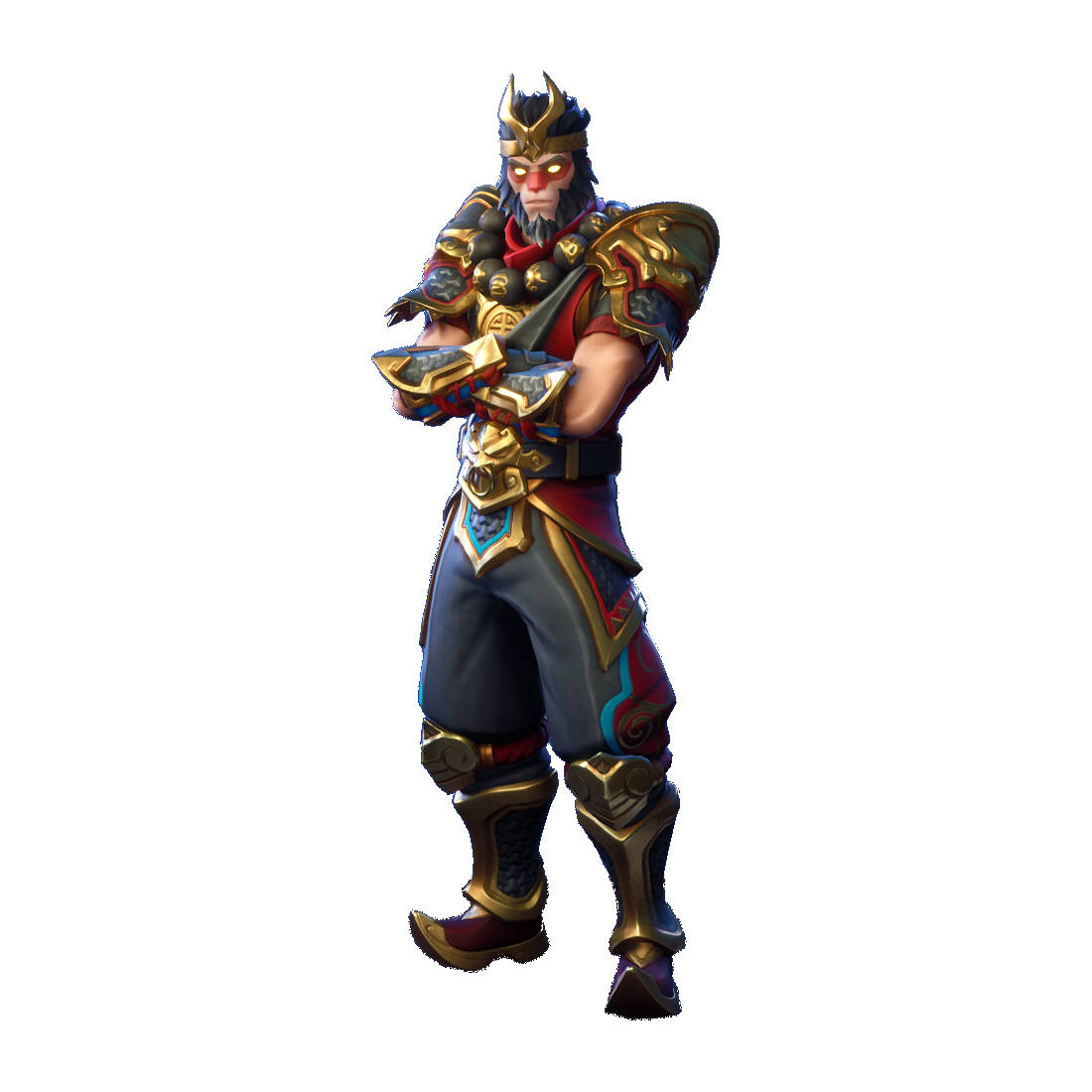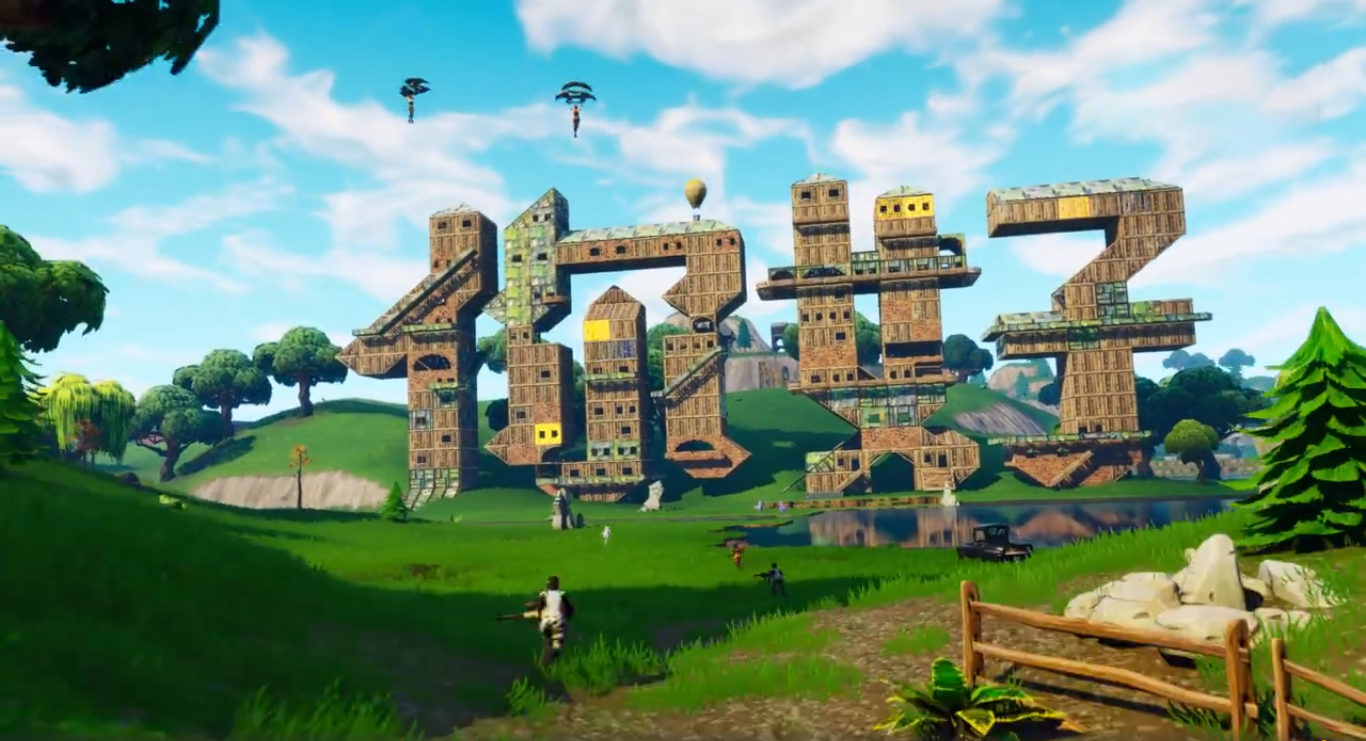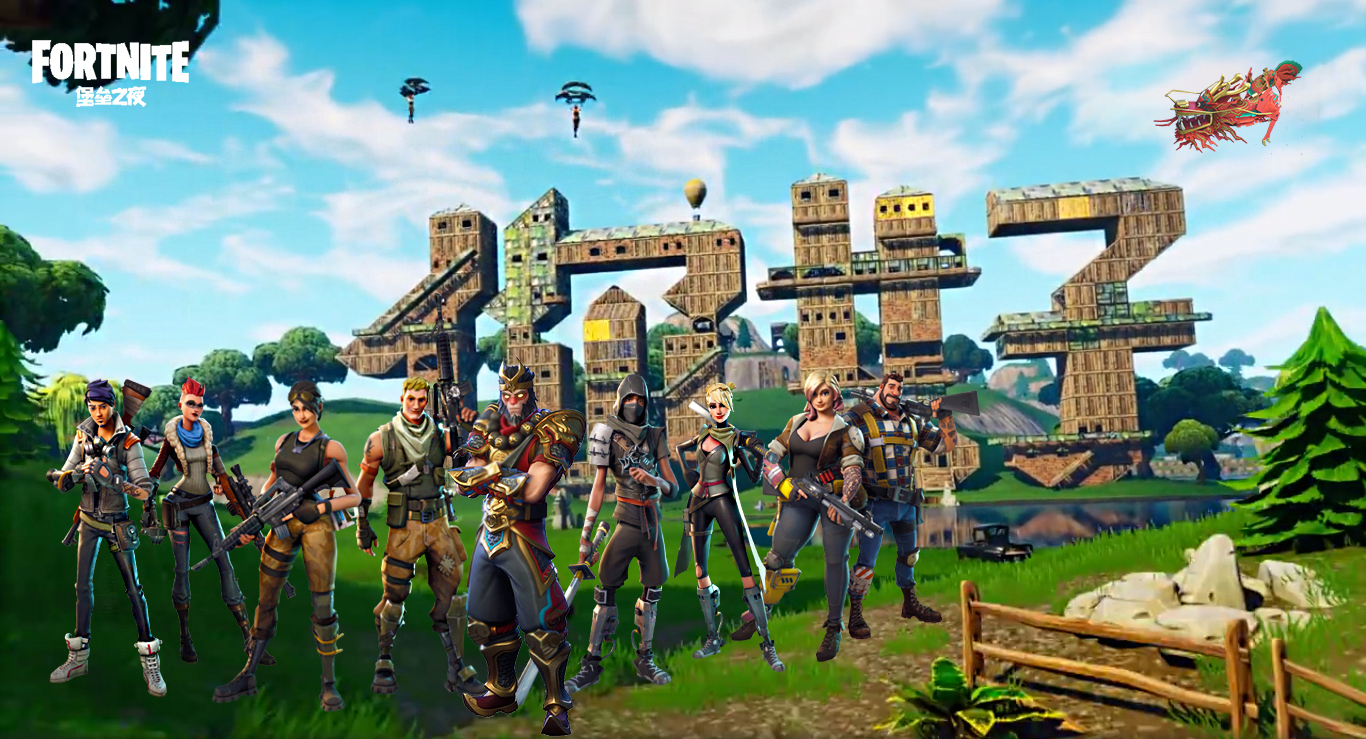Fortnite is a game developed by Epic Games and was officially introduced to mainland China on April 23th, 2018 by Tencent. Thus, the game needs a lot of localization work to make sure it is well adapted to Chinese culture with well translated UI strings, understandable names of heroes and items, and locally relevant videos or graphics.
Interested in this game, I decided to create a localized poster for it using Photoshop. The original poster shown below is quite simple: there are several heroes in the poster, the only text needs to be translated is the name of the game, and it has a clean background. Most of the times, when we talk about localizing something by doing desktop publishing, we are aimed at translating all the text in it without losing its original style or format. However, in this case, simply translating the text is far from what can be called “a localized poster”. So, I decided to recreate one based on the existing poster and make it more locally relevant, friendly and attractive to Chinese users.

(Original Poster)
Before I started everything, I wanted to be clear of my goals, which include adding in Chinese style roles, background and other elements.
Workflow
Step 1: Resource material collection
- Separate all the heroes so that I can move them around.

(png Files for Each Hero)
2. Add in a hero with a Chinese style outfit (Wukong outfit). Everyone in China knows Wukong, the Monkey King in the story “Journey to the West”.

(Wukong Outfit)
3. Add in a Chinese dragon, which is actually a glider in the game used by players to land onto the battle field.

(Royale Dragon Glider)
4. Create a background with Chinese characters “你好”, which literally means “hello” in Chinese. These two characters are made up by the forts in the game.

(Background Picture)
Step 2: Process pictures in PhotoShop
- Resize each picture and group them together in a V line, with the Wukong figure in the center so that it can be emphasized.

(The New Squad)
- Remove the background color of the Chinese dragon glider using the Magic Eraser tool and flip the canvas horizontally.

(Dragon Glider with Transparent Background)
3.Capture a screenshot from an advertising video of Fortnite posted on its Weibo account, clean the screenshot and resize the picture

(Screenshot from the Video)
4. Translate the text “Fortnite”.
Although there was only one word that needed translation. It did took me a long time to figure out how I can properly output the Chinese text into the right font. The problem is, I couldn’t find the same font with the game in PhotoShop. Then I decided to get a picture with the official Chinese name of the game and use it to replace the original logo.

(Bilingual Logo)
5. Put every layer together onto one canvas and make adjustments.

(Final Product)
Challenges and Solutions
- Resource Material Collection
Resource material collection is the main challenge I’ve encountered in the whole process. I need to get the png file for each character in the poster so that I can reposition them. Although I can find these resources from Google Images by searching “Fortnite characters transparent”, the resolution and the size of these pictures are different. Once I gathered them onto one canvas, they didn’t appear like a whole due to resolution difference.
Solution: Resize each picture carefully so that they look the same big when being put together. Use the sharpen tool to sharpen the blurry layers to make each hero in the squad stays in the same level of definition.
Another challenge was the lack of ideal resource materials. Most of the time, I need to recreate what I’ve got and then use them for my final product.
For example, it took me a long time to find a satisfactory background picture. As I was exploring every post on Fortnite’s official Weibo page, I was impressed by its advertising video for Chinese market and decided to capture a frame from it. It was not hard to do a screenshot, but some work needs to be done for cleaning up the screenshot.
To remove the game logo and irrelevant text, I used the Content-Aware Fill tool under the Edit tab of PhotoShop.
- Font, font, font ……
As I mentioned above, I had trouble finding the same font used by Tencent or Epic. The walkaround solution I took was using another picture with the official Chinese translation text and making it into a layer in my final product. But since it is not a real text layer, this would be problematic if there’s a huge amount of text or the file needs to be recreated in InDesign.
In real life, however, if you are a member of the localization team of Fortnite, you probably can access to their resource library and get the font.
Conclusion
The recreation of the poster is not a difficult task and doesn’t need a lot of high-level skills in PhotoShop. But compared to the original one, the final poster looks more relevant to the Chinese market. As a Chinese player, I will appreciate Fotnite’s devotion in adapting its products for a specific market. As a localizer, I want to prove, by doing this project, that localization is much more than translation, it needs creativity, familiarity with the product, and attention to details from the localizer.



Leave a Reply